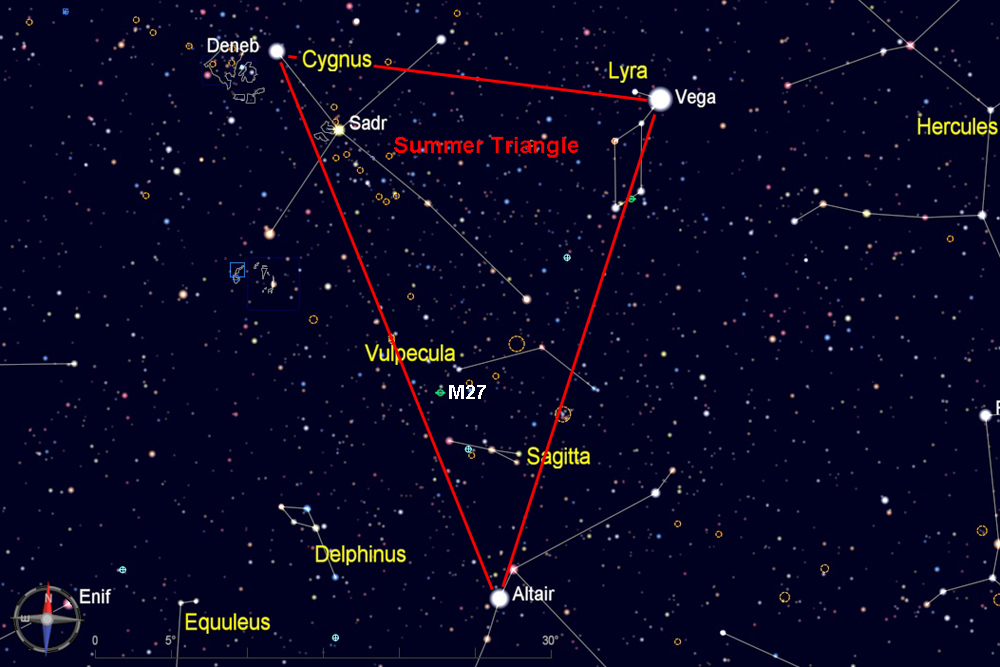
Start by finding the Summer Triangle, which consists of the three of the brightest stars in the sky--Vega, Deneb, and Altair. The Summer Triangle is high overhead throughout the summer, and it sinks lower in the west as fall progresses.
For this star hop, start from Altair in the constellation Aquila, the eagle.

From Altair, follow the stars that form the middle of the eagle's body and end with three stars that form a slightly hooked "tail". Extend the line of those three stars one more step to the southwest and you will arrive at M11, which is in the small and dim constellation Scutum, the shield. After observing M11, you can look for M26 about 3.5 degrees to the south-southwest. To get to the right location, note the position of M26 relative to two stars of about magnitudes 4 and 5 in Scutum (circled in the chart below).
